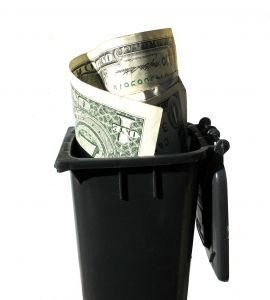 One sure way to reduce the amount of money you spend on food is to avoid wasting any of it. The average American wastes up to 50 percent of the food that they buy. From half-eaten sandwiches and chicken nuggets left by the kids to lettuce that wilts and leftovers that turn into science experiments, chances are that you throw some food away every day.
One sure way to reduce the amount of money you spend on food is to avoid wasting any of it. The average American wastes up to 50 percent of the food that they buy. From half-eaten sandwiches and chicken nuggets left by the kids to lettuce that wilts and leftovers that turn into science experiments, chances are that you throw some food away every day.
Think about your food bill and halve it or even quarter it if you are better than average. That is how much money you are throwing away. A $200 food bill could be reduced to $150 or $100 a week when you avoid waste. Here are some tips.
If you eat out at a restaurant, always get a doggie bag. You can use the leftovers in so many ways. Don’t want to keep food in the car for a a couple of hours until you get home? Take a lunch cooler and ask the restaurant for a large cup of ice to keep it all cool.
For kids meals, offer half or three-quarters of the serving you might normally offer. You can always refill a glass or put more food on the plate as needed and avoid those half-glasses of milk and half-eaten sandwiches.
If you do wind up with a half-drank glass of milk, put a cover or a bit of plastic wrap over the cup and place it in the fridge for later.
And while we are on the subject of drinks, keep track of all of those sippy cups full of milk or juice. Kids tend to carry them all over the house and lose track of them, until you find them hours later when the contents have gone bad. Limit your child to the table or at least one room with the sippy cup and promptly place it in the fridge when your child is done with it.
Check back again for more tips for avoiding food waste, such as special tips when you have babies or children, tips for produce and plenty of ideas for all of those leftovers.
Mary Ann Romans writes about everything related to saving money in the Frugal Blog, technology in the Computing Blog, and creating a home in the Home Blog. Starting June 1st, don’t miss her articles in the Baby Blog. You can read more of her articles by clicking here.
Related Articles:
Saving Food: The Ice Cube Method
Whole Turkey Versus Turkey Breasts: Cost Comparison

